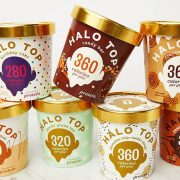Girl Scout Cookie season is upon us: the time of year that turns me into a cookie junkie. I scour my neighborhood for green-clad girls selling colorful boxes of delicious processed sugar. It’s been an entire year since I last ate these cookies, but I can still taste the minty, chocolatey goodness of a Thin Mint.
But after scarfing down my first box of the year, the euphoria of the cookie hunt dies down and suddenly a realization dawns on me: these outrageously expensive cookies really aren’t that good. Yet, each year I go out of my way to buy as many boxes as I can carry.
But that is when the brilliance of Girl Scout Cookies really hits me: Through a genius marketing strategy and an appreciation of the entrepreneurial spirit, the Girl Scouts have been able to turn a mediocre line of cookies into a phenomenally successful all-around customer experience.
The Dominance Hierarchy of Cookies
Don’t get me wrong, Girl Scout Cookies are good, but they aren’t great. If all the cookies of the world were placed on a dominance hierarchy, Girl Scout Cookies would be somewhere in the middle. But before Samoa loyalists get offended by this rather bold statement, let me state my case.
The dessert industry is filled with specialized products. Gourmet donuts, cupcakes, and cookies have drawn in a huge consumer base in recent years. Millennials are major drivers of consumer demand and if there is one thing young people love, it’s specialized products. Due to this large demand, delicious freshly baked cookies are everywhere. And almost any of these options is going to be better than a Girl Scout Cookie.
The comparison is a bit unfair; after all, freshly baked goods are in a whole different category from packaged desserts. But if we are being true to the cookie hierarchy, baked goods must be considered. Yet, even compared to other store-bought varieties, Girl Scout Cookies simply aren’t the best option available on the market.
For my palate, almost any cookie produced by Pepperidge Farm is better when judged solely on taste. I would even be willing to go on the record stating that Chewy Chips Ahoy are superior to any of the Girl Scout Cookie flavors, including the Samoa, which is my personal favorite.
Some name brand companies have come out with their own knock-off versions of the famous Girl Scout Cookie flavors. Keebler’s Grasshopper mint and fudge cookies, for example, taste nearly identical to Thin Mints. This makes sense, as Keebler runs Little Brownie Bakers, the company responsible for producing Girl Scout Cookies. But while a box of Thin Mints will set you back five bucks, the Keebler Grasshoppers cost only $2.69 and are available throughout the year.
Yet, even so, many customers prefer to pay more and travel further for Girl Scout Cookies. And therein lies the beauty of the Girl Scout’s marketing strategy.
Artificial Scarcity
The decision to only sell the cookies a few months out of the year and only at select locations has made consumers want the product that much more. And they will go to almost any lengths to get these cookies. This is a technique called “scarcity marketing.” And through this strategy, the Girl Scouts have completely changed the way their customers purchase cookies.
If I am craving Oreos, I know that at any given time I can go to the grocery store and find them. And since these cookies are so widely available, I never worry about stocking up. I grab one pack and that’s that. If I want another pack for any reason, I know finding one won’t be a problem. But Girl Scout Cookies are in a whole other realm.
Since Girl Scout Cookies are only available for purchase through the Girl Scouts themselves, going out and buying them takes more effort than buying a pack of Oreos. Before setting off on my quest, I have to use a Girl Scout Cookie finder app on my phone. After inputting my zip code, the app will give me a list of results naming the locations and times that the Girl Scouts are expected to be peddling their goods. But the excitement does not end there.
Since my window for being able to purchase these cookies is limited, I don’t just buy one box, like I would with Oreos. Instead, I buy these cookies as if I were stocking up for the apocalypse. There have been at least two occasions in my adult life when I have purchased every box of Samoas the Girl Scouts had with them at their booth. And even though I had to make several trips to my car, I had no regrets.
And even though these large purchases leave me with more cookies than I can possibly eat by myself, I always end up buying even more boxes when I run into the next troop. And I am hardly alone in this practice.
Every time I go to a friend’s house between the months of January and March, I will almost always see a sizeable stash of Girl Scout Cookies in their pantry. The fear of missing out (FOMO) on Girl Scout Cookie season has consumers so worried, they purchase more of the product than they would under normal circumstances. Such is the power of FOMO marketing. But none of this is done by force. This is entirely a willing decision by the consumer, which makes the entire marketing concept worth of admiration and praise.
I have previously asked myself why the Girl Scouts haven’t moved towards a digital model, where cookies can be sold online or via a mobile app. This would allow more people to easily purchase the product. But this completely misses the point.
The fact that you can only buy from the Girl Scouts themselves only makes consumers want them more.
An anti-capitalist might point to this as yet another example of how marketing manipulates consumers, generating wants instead of catering to them. “See, those tiny capitalists are tricking you into craving something you don’t even enjoy that much!”
What the Girl Scouts are selling is more than just a cookie; it’s a customer experience. The countdown to cookie season, the quest for the Scouts, the race to acquire your stash before the cookies disappear for months: it’s all part of the “product” and all part of the fun. And the experience has become an American tradition. Nothing is as satisfying than being the first of your friends to track down a box of Thin Mints. That in itself is a badge of honor.
But what I personally enjoy the most about the Girl Scout Cookie experience is witnessing the rise of budding entrepreneurs.
Teaching the Entrepreneurial Spirit
The internet has completely changed the way business transactions are made. But just because many things are done in the digital space doesn’t mean there isn’t still a place for a traditional sales approach. There is no doubt that utilizing the internet to sell Girl Scout Cookies would reap high rewards. But this is simply not the point of cookie season.
Few children, or adults for that matter, understand the struggle of making a face-to-face sale. Pitching a product, even one you fervently believe in, is not an easy task. In fact it takes a fair amount of courage, salesmanship, and resilience. But without the ability to make a solid and convincing elevator pitch for whatever is being sold, no entrepreneur can expect to achieve success. Luckily for the Girl Scouts, this is something these young entrepreneurs in training have mastered since they have to do it each season.
Each must also learn to utilize their network of contacts in order to sell as many cookies as possible. This means getting out of their comfort zones and pitching to adults since they are the ones with the money. And while the product is one that is well known enough to basically sell itself, pitching face-to-face is still an important skill. And since most young children are not being taught this valuable skill elsewhere, the Girl Scouts are providing an invaluable learning experience.
Cookie season also fosters an environment where the girls can learn about healthy market competition. The season itself is a competition among the girls, each attempting to sell more cookies than their friends. And since each girl is selling the same exact product, each must rely on individualized marketing strategies to sell more boxes than the other girls.
It’s Not about the Cookie
In modern times, we are able to order almost anything our hearts desire on Amazon and have it delivered to our doorstep in two days, gourmet cookies included. And yet, in a world of infinite consumer convenience, we have still chosen to embrace the seemingly outdated Girl Scout Cookie model with open arms. That is because once again, buying Girl Scout Cookies isn’t really about buying Girl Scout Cookies.
We buy these cookies because as consumers, we love the chase and we admire the entrepreneurial spirit these young cookie pushers emulate. So even though Girl Scout Cookies may not be the best tasting cookie on the market, they are certainly a product worthy of praise. And I have every intention of purchasing as many boxes as I possibly can this cookie season.













